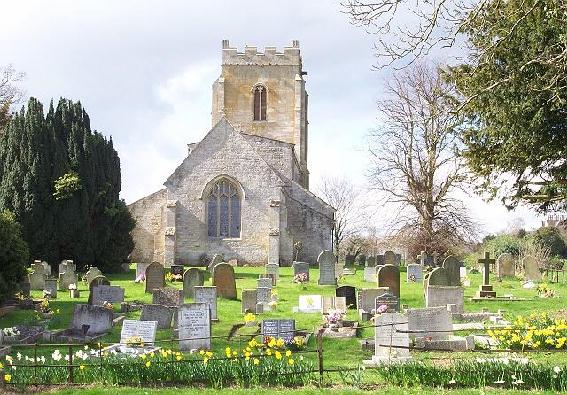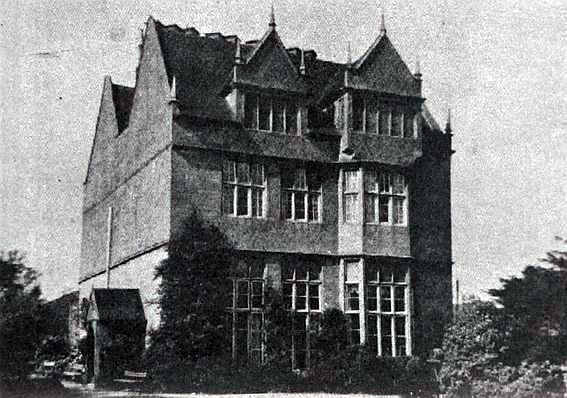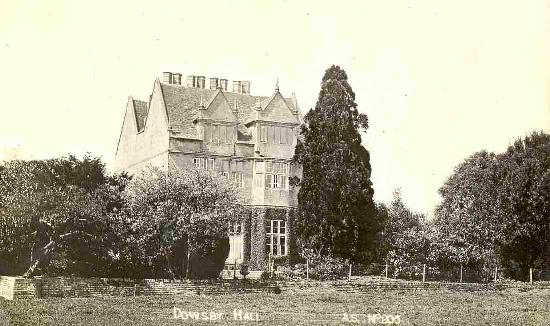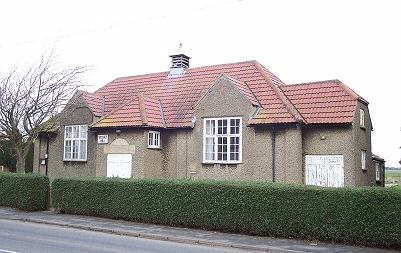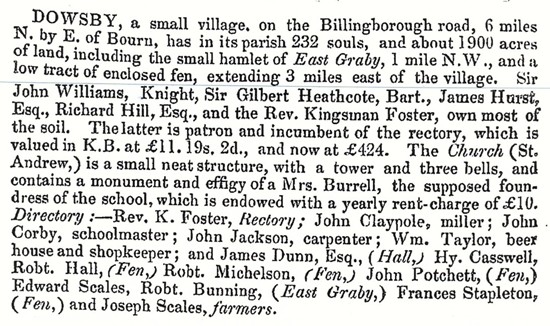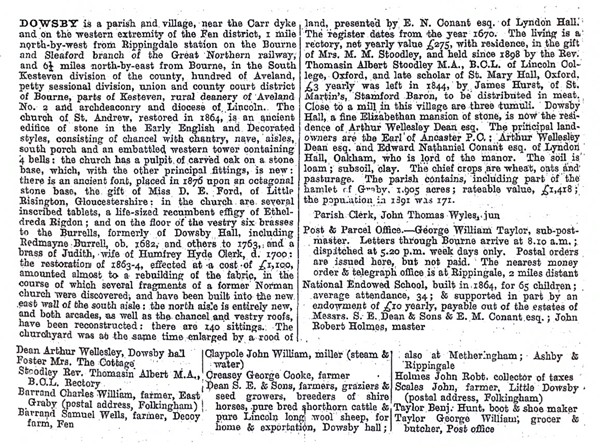|
Dowsby
The low battlemented 15th century tower of the village church at Dowsby can be clearly seen as you drive north on the B1177, six miles from Bourne. This is a small village on the very edge of the fen with an Elizabethan hall, a few cottages and red-tiled farm buildings to keep company with the church's largely Early English and Decorated styles but extensively restored in 1863-4 at a cost of £1,100. The solid stone western tower is elegant although its pinnacles have been decapitated. Four stones with cable moulding built into the
east wall of an aisle reflect the church's Saxon origins while the nave, with a big pointed tower arch at one end and a wide chancel arch at the other, also looks venerable though both of its own arcades have been
rebuilt, while in a recess is a 14th century stone life-sized and recumbent effigy of Etheldreda Rigdon in a long, tight-waisted gown.
Only half of the original building is now left and the interior, which
contains late 17th century panelling, is substantially changed. Richard
and Jane Burrell settled at Dowsby Hall which was later inherited by their
son John who was knighted at Lincoln on 15th July 1642. The Burrell family
are remembered by six brasses in the chancel of the village church,
including Redmayne Burrell who died in 1682 and others who passed on
between then and 1763. Many blind windows including all those on the top
floor were restored and reopened by the Jennings family in 2000.
Dowsby was originally Duesby, Dusi's farmstead or village, an old Danish name, but at the time of the Domesday survey in 1086, this had become Dusebi and the passage of the years eventually gave us the Dowsby that we know today. It stands near to the Car Dyke and was therefore known to the Romans. In 1981, an oval-shaped well was discovered by Mike Jarrett while renovating his late 18th century cottage home. The building, dating back to 1799, was formerly the Old Vine public house which was run by the Tyler family from 1860 to 1942, latterly as an off-licence. The well was not recorded on any maps but was at least two centuries older than the cottage and was unearthed outside one of the rear doors. It measured 4 feet X 5 feet and because of its large size was thought to have been a communal well. Records preserved in the Lincolnshire County Archives revealed that in 1583, there were 13 cottages in the village and it is therefore reasonable to assume that this well served them all. Workmanship was impressive, the stones, each the size of a house brick, having been evenly cut to fit perfectly together without a binding agent such as cement. The well was about 22 feet deep and after being drained, refilled to a depth of three feet in twenty minutes. Building work necessitated it being filled in and so it has not been preserved.
There is also a village hall, a gift to the village by Arthur Wellesley Dean
to mark the end of the Great War of 1914-18 and a plaque over the front
door remembers his generosity with the inscription:
"1920: Arthur Dean gave Dowsby
this hall. A thanksgiving for In recent years, the building was in a dilapidated state and in need of attention until the autumn of 2010 when restoration work costing £56,000 was completed with financial help from the Heritage Lottery Fund, Lincolnshire County Council and donations from other organisations such as the parish council. The money was used to pay for repairs and replacements to the doors, windows and other sections of woodwork that had rotted as well as replacing a toilet block for ladies with facilities for the disabled and laying a new path. Anthony Jennings, the project manager, said that the scheme had been completed to an exceptionally high standard in sympathetic and sustainable materials while preserving and enhancing the original features. "The hall has an important place in our village life and is now a fully inclusive venue for social events", he said. The funding also covered an archive exhibition in the village hall which included five display panels and archive recordings illustrating the history of Dowsby and a heritage trail linking the hall with Dowsby Hall, the church and the old rectory.
REVISED NOVEMBER 2013 See also Henry Burtt Dowsby duck decoy Little Dowsby Dowsby village school and Fanny Michelson's 1881 sampler Go to: Main Index Villages Index |
||||||||||||
